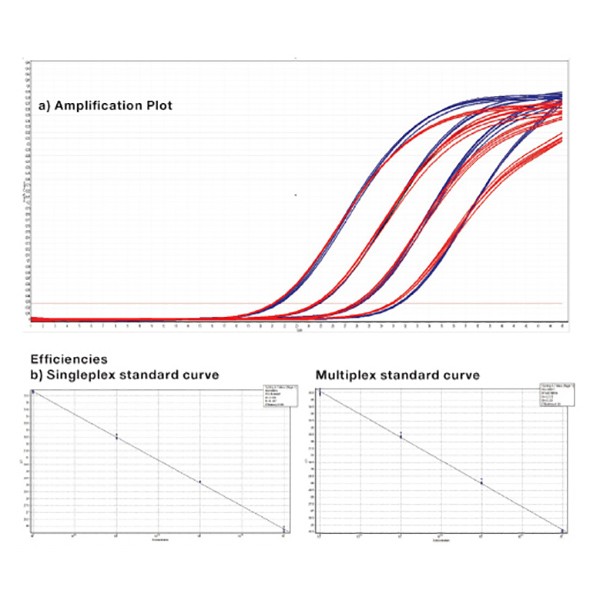Ordering
*link will take you to our exclusive distribution partner site
*link will take you to our exclusive distribution partner site
The SensiFAST™ Probe No-ROX Kit has been developed for fast, highly reproducible real-time PCR and has been validated on all commonly-used real-time instruments that do not require the passive reference dye ROX. SensiFAST Probe has been formulated for use with dual-labelled probes, including TaqMan®, Scorpions® and molecular beacon probes.
A combination of the latest advances in buffer chemistry and PCR enhancers, together with an antibody-mediated hot-start DNA polymerase, ensures that the SensiFAST Probe Kit produces reliable assay results under fast thermal cycling conditions. Furthermore, SensiFAST Probe has been optimized to deliver excellent results in multiplex assays.
The SensiFAST Probe No-ROX Kit has been optimized to deliver optimal performance in tandem with the SensiFAST cDNA Synthesis Kit, which offers fast, unbiased cDNA synthesis, without compromising cDNA yield or coverage.

Fig 1. Comparison of sensitivity and efficiency in a singleplex and quadruplex reaction
A 10 fold serial dilution of human cDNA was amplified both in singleplex reactions (blue line) and quadruplex reaction (red line) (the results displayed are for just one gene). SensiFAST Probe No-ROX illustrates exactly the same high sensitivity, excellent reproducibility and Ct values for both the singleplex and multiplex reactions (A) and no reduction of efficiency (B) that is commonly associated with multiplexing.
Fig. 2 SensiFAST Probe using fast cycling conditions
The β2mg gene was amplified using SensiFAST Probe Lo-ROX (black) and the results were compared with amplifications using a kit from Supplier B (red). The process used a 10 fold serial dilution of human genomic DNA over three orders of magnitude. The results illustrate that SensiFAST Probe Lo-ROX is as fast, but much more sensitive than Supplier B.
|
Reagent |
500 x 20 µL Reactions |
2000 x 20 µL Reactions |
5000 x 20 µL Reactions |
|
SensiFAST Probe No-ROX Mix (2x) |
5 x 1 mL |
4 x 5 mL |
10 x 5 mL |
All kit components should be stored at -20°C upon receipt. When stored under the recommended conditions and handled correctly, full activity of the kit is retained until the expiry date on the outer box label.
Shipped on dry/blue ice.